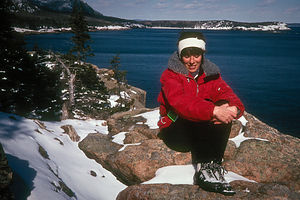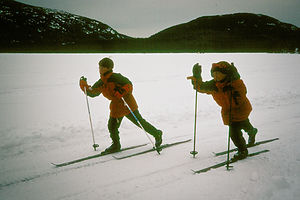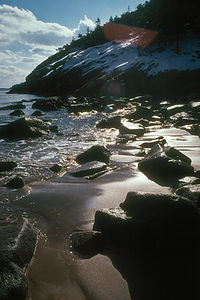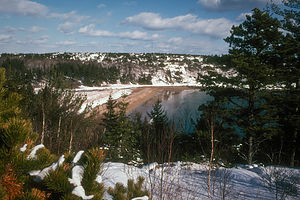- Home
- About
- Map
- Trips
- Bringing Boat West
- Migration West
- Solo Motorcycle Ride
- Final Family XC Trip
- Colorado Rockies
- Graduates' XC Trip
- Yosemite & Nevada
- Colorado & Utah
- Best of Utah
- Southern Loop
- Pacific Northwest
- Northern Loop
- Los Angeles to NYC
- East Coast Trips
- 1 Week in Quebec
- Southeast Coast
- NH Backpacking
- Martha's Vineyard
- Canadian Maritimes
- Ocracoke Island
- Edisto Island
- First Landing '02
- Hunting Island '02
- Stowe in Winter
- Hunting Island '01
- Lake Placid
- Chesapeake
- Provincetown
- Hunting Island '00
- Acadia in Winter
- Boston Suburbs
- Niagara Falls
- First Landing '99
- Cape Hatteras
- West Coast Trips
- Utah Off-Roading
- Maui
- Mojave 4WD Course
- Colorado River Rafting
- Bishop & Death Valley
- Kauai
- Yosemite Fall
- Utah Off-Road
- Lost Coast
- Yosemite Valley
- Arizona and New Mexico
- Pescadero & Capitola
- Bishop & Death Valley
- San Diego, Anza Borrego, Joshua Tree
- Carmel
- Death Valley in Fall
- Yosemite in the Fall
- Pacific Northwest
- Utah Off-Roading
- Southern CA Deserts
- Yosemite & Covid
- Lake Powell Covid
- Eastern Sierra & Covid
- Bishop & Death Valley
- Central & SE Oregon
- Mojave Road
- Eastern Sierra
- Trinity Alps
- Tuolumne Meadows
- Lake Powell Boating
- Eastern Sierra
- Yosemite Winter
- Hawaii
- 4WD Eastern Sierra
- 4WD Death Valley +
- Southern CA Deserts
- Christmas in Tahoe
- Yosemite & Pinnacles
- Totality
- Yosemite & Sierra
- Yosemite Christmas
- Yosemite, San Diego
- Yosemite & North CA
- Seattle to Sierra
- Southwest Deserts
- Yosemite & Sierra
- Pacific Northwest
- Yosemite & South CA
- Pacific Northwest
- Northern California
- Southern Alaska
- Vancouver Island
- International Trips
- Index
- Tips
- Books
- Photos/Videos
- Search
- Contact
Acadia National Park, ME
Saturday, February 19, 2000 - 9:00pm by Lolo
147 miles and 3 hours from our last stop - 2 night stay
Travelogue
 Cross-Country Skiing on trail over oceanThere are few places that can compare to the beauty of Acadia under a foot of freshly fallen snow, and the amazing thing was that we had this whole incredible place to ourselves. Where was everybody? In the entire Blackwoods Campground, we only saw two tents, and we never even saw its occupants. And to top it off, the campground is free in the winter. This was just too good to be true.
Cross-Country Skiing on trail over oceanThere are few places that can compare to the beauty of Acadia under a foot of freshly fallen snow, and the amazing thing was that we had this whole incredible place to ourselves. Where was everybody? In the entire Blackwoods Campground, we only saw two tents, and we never even saw its occupants. And to top it off, the campground is free in the winter. This was just too good to be true.
Our plan was to see the park on cross country skis. Herb and I had always enjoyed the peace and serenity to be found out in the woods on a pair of skis--I'm not sure why we thought that adding Andrew and Tommy on skis to that equation would still result in peace and serenity. However, we were willing to give it a try.
Unfortunately when we stopped at Cadillac Mountain Sports in Bar Harbor to rent the boys skis, we were told that all the smaller skis and boots were already rented. Perhaps, if we stopped back the next day, some would be returned. We weren't very optimistic. After all, what was the chance that two sets of skis and boots that fit both boys would miraculously be returned, and getting just one pair would be even worse.
 Lolo on trail over oceanWe continued on to the Blackwoods Campground in the park where as promised by the ranger, a few sites were shoveled out. The only signs of other life were two tents--just looking at those tents made me feel even cozier inside the RV. It was an incredible feeling to sit in the warmth of our home on wheels, surrounded by the thick snow-covered forest.
Lolo on trail over oceanWe continued on to the Blackwoods Campground in the park where as promised by the ranger, a few sites were shoveled out. The only signs of other life were two tents--just looking at those tents made me feel even cozier inside the RV. It was an incredible feeling to sit in the warmth of our home on wheels, surrounded by the thick snow-covered forest.
However, like most kids, Andrew and Tom were not satisfied for long with just admiring the snow from afar, but rather they had an uncontrollable need to roll around in it and get it in every exposed pore. We let them loose, and they had a grand old time building a snowman, having a snowball fight, and getting as soaking wet possible. I kept wondering what I was going to do without a clothes dryer. As they played, Herb and I sat in the back of the motorhome, sipping a glass of wine, and watching their antics out our back window. They certainly do know how to have a good time.
After awhile, Herb and I joined them outside and took them on a walk down to the cliffs overlooking the sea. The boys insisted on wearing their butt sleds. I'm not sure if that is the official name for them or not, but if not, it should be. They look like plastic tortoise shells that you strap to your butt, so that you are never unprepared when confronted with a snowy or icy hill. The technique for using them is to spot a downhill, run madly towards it to gain speed, and then just throw yourself down on your butt and hope for the best--recommended only for younger bodies. As we walked through the woods of the campground, the boys found ample opportunities to use them. I just wanted to make sure they didn't try them when we got closer to the cliffs.
 Herb Cross-Country Skiing on trail over oceanThe ocean was much closer than I thought, just a short walk through the forest from the campground. The contrast of the snowy forest and the waves crashing over the rocks was incredible.
Herb Cross-Country Skiing on trail over oceanThe ocean was much closer than I thought, just a short walk through the forest from the campground. The contrast of the snowy forest and the waves crashing over the rocks was incredible.
Back in the forest again, we told the boys to stop and just listen. You don't realize how much background noise there is in life until you've heard the silence of the Maine wilderness. The only interruption to the quiet was the occasional plop of snow falling from the trees.
We spent a very cozy evening back in the RV that night, watching movies and peering out the window for moose. The moon was almost full so we could actually see into the forest, but unfortunately there were no moose to be found.
The next morning we drove back into Bar Harbor in search of XC skis for the boys. Someone above must be watching over us, because when we got to Cadillac Mountain Sports, the clerk went through the returned skis and found two pairs of skis and boots that fit the boys perfectly. What a tremendous bit of luck.
 Boys in Cross-Country Racing FormNot wanting to waste another minute of this beautiful sunny day, we drove back to the park and along the Park Loop Road looking for a good place to ski (only a small portion of the park road is open in winter). Obviously the most beautiful place was along the rocky cliffs overlooking the ocean, but, good parents that we are, we questioned the wisdom of teaching the boys how to ski along the edge of a cliff. However, the trail was not along the very edge, but a ways back, and the boys assured us that they would be careful. We found a place to safely park the motorhome near Thunder Hole.
Boys in Cross-Country Racing FormNot wanting to waste another minute of this beautiful sunny day, we drove back to the park and along the Park Loop Road looking for a good place to ski (only a small portion of the park road is open in winter). Obviously the most beautiful place was along the rocky cliffs overlooking the ocean, but, good parents that we are, we questioned the wisdom of teaching the boys how to ski along the edge of a cliff. However, the trail was not along the very edge, but a ways back, and the boys assured us that they would be careful. We found a place to safely park the motorhome near Thunder Hole.
The boys were pretty excited about trying out the skis, so it was hard getting them to stand still long enough to give them the basics. They took to the skis like fish to water and before we knew it, we were struggling to keep up with them. Somehow they managed to transform what is normally a serene and mellow sport into "Extreme XC Skiing." They sought out every hill, jump, obstacle, or whatever they could find to make things more exciting and to give me gray hairs. However, they did always stay away from the edge of the cliff. That afternoon we skied along the Ocean Trail from Thunder Hole to Sand Beach. We took off our skis and walked down the steps to the beach. The boys wanted to ski down the steps, but we quickly squashed that idea.
In fact, they loved it so much, that before returning the skis the following day, we stopped at Eagle Lake and they got to try something new--skiing across a frozen lake. Having the freedom to go any direction you want is a very different experience from following a set of tracks along a trail. They loved that too. Unlike yesterday, today we actually saw people. There were about a dozen or more ice fishing huts scattered about the lake, and outside them were a few hardy souls trying their luck through small holes cut through the ice. It looked like a tiny Arctic village. Acadia in winter had been a truly unforgettable experience!" Boys Cross-Country Skiing on Eagle Lake
Boys Cross-Country Skiing on Eagle Lake
Description
 Snowy Maine CoastAcadia National Park, located on the rugged coast of Maine, encompasses 45,000 acres of mountains, forests, lakes, and rocky coastline. Most of Acadia is on Mt. Desert (pronounced "dessert") Island, with some other bits of the park on small islands and the Schoodic peninsula. Although Acadia is the fifth smallest national park, its 4.2 million annual visitors make it the second most highly visited park in the country.
Snowy Maine CoastAcadia National Park, located on the rugged coast of Maine, encompasses 45,000 acres of mountains, forests, lakes, and rocky coastline. Most of Acadia is on Mt. Desert (pronounced "dessert") Island, with some other bits of the park on small islands and the Schoodic peninsula. Although Acadia is the fifth smallest national park, its 4.2 million annual visitors make it the second most highly visited park in the country.
In addition to the carriage roads, there are over 120 miles of hiking trails, many of which have spectacular ocean and woodland views. Most of the hikes in the park are fairly short to moderate. One very exhilarating and scenic hike is the Beehive trail, which starts just north of the Sand Beach upper parking lot. The hike is not for those with a fear of heights, as it requires using a series of fixed metal handles to climb up steep trails and traverse across exposed cliffs. However, the stunning view of Sand Beach and the ocean beyond make the struggle worthwhile. It takes about 30 minutes to get to the 520 foot summit.
 Sandy Beach in WinterOne of the longest trails in the park is the 7.4 mile (round trip) hike to the summit of Cadillac Mountain. The Cadillac Mountain South Ridge Trail starts just south of the entrance to the Blackwoods Campground, climbs through the woods for awhile, and then cuts above the treeline as it approaches the summit. The trail, which rises 1,340 feet in 3.7 miles, is fairly strenuous.
Sandy Beach in WinterOne of the longest trails in the park is the 7.4 mile (round trip) hike to the summit of Cadillac Mountain. The Cadillac Mountain South Ridge Trail starts just south of the entrance to the Blackwoods Campground, climbs through the woods for awhile, and then cuts above the treeline as it approaches the summit. The trail, which rises 1,340 feet in 3.7 miles, is fairly strenuous.
Mount Desert Island has been a popular destination since the mid-19th century when the town of Bar Harbor became a thriving summer resort community for the most prominent members of society. Families such as the Vanderbilt's, Rockefellers, Carnegies, and Astor's built elegant mansions, which they called "cottages," along its beautiful rocky coastline. For over 40 years, much of high society summered here until the Great Depression and World War II ended such extravagant living. The real end came to society life here when the Great Fire of 1947 destroyed numerous hotels and more than 70 mansions.
Fortunately, the wealthy inhabitants of Bar Harbor loved the natural beauty around them and donated land, time, and money so that this land could be preserved for future generations to enjoy. Thanks to the untiring efforts of George B. Dorr, in 1919 Acadia became the first national park east of the Mississippi River. It was actually called Lafayette National Park at that time, but in 1929 the name was changed to Acadia.
 Sandy BeachThe 45 miles of carriage roads throughout the park were the gift of another summer resident and philanthropist, John D. Rockefeller, Jr. He loved the park and wanted to create a way for people to enjoy its beauty by horse and carriage, rather than by motorcar. Rockefeller, who had a gifted eye for landscape architecture, constructed the roads in such as way as to take best advantage of the park's beauty. Today these carriage roads are a wonderful way to explore the park, both on foot and by bike. Also, in the winter, they are ideal for cross-country skiing and snowshoeing.
Sandy BeachThe 45 miles of carriage roads throughout the park were the gift of another summer resident and philanthropist, John D. Rockefeller, Jr. He loved the park and wanted to create a way for people to enjoy its beauty by horse and carriage, rather than by motorcar. Rockefeller, who had a gifted eye for landscape architecture, constructed the roads in such as way as to take best advantage of the park's beauty. Today these carriage roads are a wonderful way to explore the park, both on foot and by bike. Also, in the winter, they are ideal for cross-country skiing and snowshoeing.
By car, the best way to see the major sights in the park is to drive the 27-mile Park Loop Road (which includes a 7-mile round trip up Cadillac Mountain). In summer time, the road becomes extremely crowded, so it pays to get an early start. The road is one-way in a clockwise direction, with the exception of a two-way portion near the start that allows direct access to the Cadillac Mountain Road. Some of the many interesting stops along the way include:
- Frenchman Bay Overlook - scenic views of the bay and Schoodic Peninsula
- Sand Beach - pretty beach made of crushed marine shells. Supervised swimming is available in the invigorating, chilly water.
- Thunder Hole - a narrow slot in the rocks along the coast named for the roaring sound produced when trapped air is squeezed out of a chasm by the incoming surf
- Otter Point - tidal pools to explore (an hour or two before low tide)
- Wildwood Stables - wagon rides on the carriage roads
- Jordon Pond House - meals and traditional tea on lawn
- Cadillac Mountain - 3.5 mile switchback road to the summit, which is the highest point on the eastern seaboard north of Brazil
There are two campgrounds within the park boundaries--Blackwoods, which is open all year round, and Seawall, which is only open in the summer. Although there are not many facilities in the park, there are numerous restaurants, shops, hotels, campgrounds, etc., in the nearby resort community of Bar Harbor."
- ‹ previous
- 2 of 9
- next ›
Acadia National Park location map
Javascript is required to view this map.
